mansion house
mansion house
Princes Street
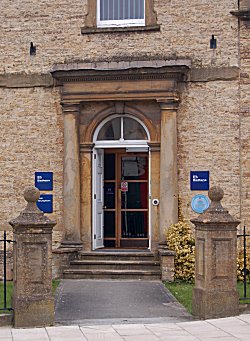 The
Mansion House,
Princes Street is a town house
built in the
late eighteenth
century by
banker
John
Hutchings.
Watt's map of
1806 (below) shows the
property as
belonging to
John Hutchings
Esq. with its
rear gardens
adjoining the
Sheep Fair. At
this time
North
Lane was known
as Sheep Lane.
The
Mansion House,
Princes Street is a town house
built in the
late eighteenth
century by
banker
John
Hutchings.
Watt's map of
1806 (below) shows the
property as
belonging to
John Hutchings
Esq. with its
rear gardens
adjoining the
Sheep Fair. At
this time
North
Lane was known
as Sheep Lane.
The main house is of cut and squared local stone with Ham stone dressings under a Welsh slated roof behind a low parapet and between coped gables. It has a two-storey facade of three-bays, the entrance being in the right-hand bay. The door surround, seen at left, has attached Roman Doric unfluted columns supporting a plain entablature, which flanks a keyed semi-circular arched doorway.
There is a Ham stone string course at first floor level, and a dentilled cornice.Late nineteenth and early twentieth century extensions on the north side side, the late eighteenth century extension to the south is now known as Magnolia House.
Edward Genge ran a school in Mansion House but he died in 1825 at the early age of 25. George Rossiter carried on the school when he married Genge's widow, Grace in 1826. E Watts' map of 1829 notes the property as "Mr Rossiter's Premises" and in the 'Academies and Schools' section of Pigot's Directory of 1830 George Rossiter's "Gentleman's Boarding Academy" was listed at Mansion House.
In October 1931, during the Yeovil Reform Riot, several windows were smashed as the rioting mob passed by the Mansion House.
James Morse, a member of the Yeovil Freemasonry Lodge of Brotherly Love from 1828, took over the school after Rossiter's death by marrying his widow Grace. Morse ran the boarding and day school he called a 'Classical, Mathematics, English, French and Commercial School'. He advertised his school in the Somerset Gazette Directory of 1840, the June 1843 edition of the Sherborne Journal and in a July 1849 edition of the Yeovil Times. His classes also included the likes of land surveying and cartography and there were weekly lessons in chemistry by a visiting tutor for the agricultural students. In the 1851 census 47-year old Taunton-born Morse was listed as a schoolmaster and was living in Mansion House with his wife Grace, ten years his senior, her two children from her first marriage and their daughter, Dinah. Also in residence was a teacher, Charles Green aged 21 and three domestic servants. Additionally there were 23 resident pupils.
According to the 1846 Tithe Apportionment, Mansion House was owned by Susan (Susannah) Collins, James Morse was the tenant.
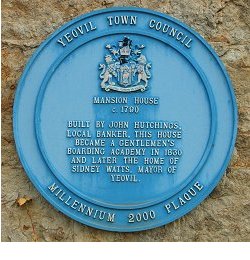 In
the 5 January
1854 edition of
the Sherborne,
Dorchester and
Taunton Journal
it was noted
that Mr Morse
was re-opening
the school on 18
January. However
in the 18 May
edition of the
Journal it noted
that Morse was
vacating Mansion
House and
relocating at Fullands House,
Taunton.
In
the 5 January
1854 edition of
the Sherborne,
Dorchester and
Taunton Journal
it was noted
that Mr Morse
was re-opening
the school on 18
January. However
in the 18 May
edition of the
Journal it noted
that Morse was
vacating Mansion
House and
relocating at Fullands House,
Taunton.
In the 1875 Post Office Directory Henry Shortland and Sidney Watts, solicitors, were listed at Mansion house. They were also listed here in the 1882 edition of Whitby's Yeovil Almanack Advertiser.
It was subsequently the residence for some forty years of Yeovil solicitor Sidney Watts (who donated Sidney Gardens to the town) and was mayor from 1893 to 1897 and again from 1901 to 1902. It was offered to him by the Town Council as a mayoral residence but was declined on the grounds of expense. In Whitby's 1898 and 1903 editions Sidney Watts was listed as a solicitor at Mansion House.
In the 1935 edition of Kelly's Directory, Mansion House was listed as the headquarters of the British Legion (Yeovil Branch) Club Ltd. with solicitors Watts, Moore & Bradford in the adjoining extension now called Magnolia House.
In the 1954 edition of Edwin Snell & Son's directory Mansion House was listed RE Clare, accountant, and Mike Loveless, turf accountant. Watts, Moore & Bradford were still in the extension together with accountant FA Hoare.
Ford's Directory of 1964 listed Eagle Star Insurance Co. Ltd and Mike Loveless, Commissioning Agent (I've never heard a bookie called that before!). By the time of Kelly's Directory in 1968 Mike Loveless & Sons Ltd, turf accountants, were occupying the whole of Mansion House with Yeovil Insurance Brokers Ltd., the Commercial Union Assurance group and the Northern & Employers' Group in Magnolia House. In the Kelly's Directory of 1974 Mike Loveless occupied Mansion House and Yeovil Insurance Brokers occupied the extension.
By 1992 Denton's Directory listed solicitors Clarke, Willmott & Clarke as occupying both Mansion House and the extension. It is now occupied by Battens solicitors.
MAP

Edward Bullock Watts' 1806 map of Yeovil showing, just left of centre Mansion House and (today's) Magnolia House alongside - the whole parcel being annotated "John Hutchings Esq".
gallery
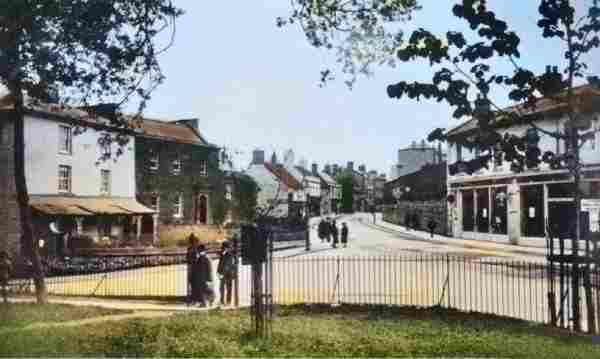
The original photograph
features in my
book 'Secret Yeovil'
This colourised photograph was taken from Bide's Gardens and shows the northern end of Princes Street / southern end of Kingston, with Court Ash running off to the left. At this time, before Reckleford was made a dual carriageway and Yeovil lost Bide's Gardens (the photographer of this photograph would today be standing on the southern carriageway of Reckleford as it approaches the hospital roundabout), Princes Street ended at North Lane on the eastern side (between the white flank wall and the ivy-covered Magnolia House left of centre) while the western side of Princes Street ended at Park Road (indicated on this image by the flank of three-storey Old Sarum House visible just right of centre).
The photograph most likely dates to the early 1920s, yet is probably one of the earliest of this location as witnessed by the building at far left, next to Mansion House and enlarged below, which pre-dates the 1930's Vincent's (now Batten's) building of the previous photograph, on the corner of Court Ash (running off to the left), we are all so familiar with. At right is the shop-front of the sales rooms of Hill & Boll's carriage works.
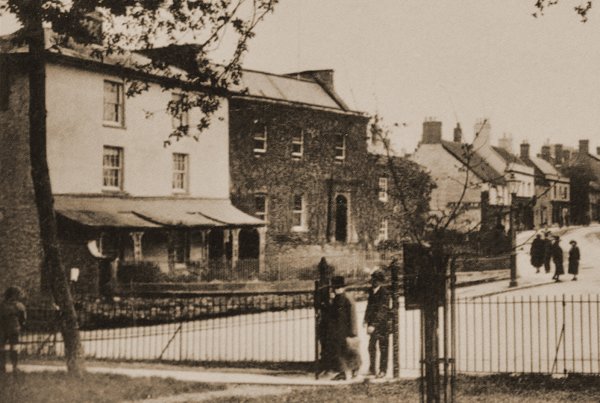
This photograph
features in my
book 'Yeovil
From Old
Photographs'
An enlargement of part of the above photograph.
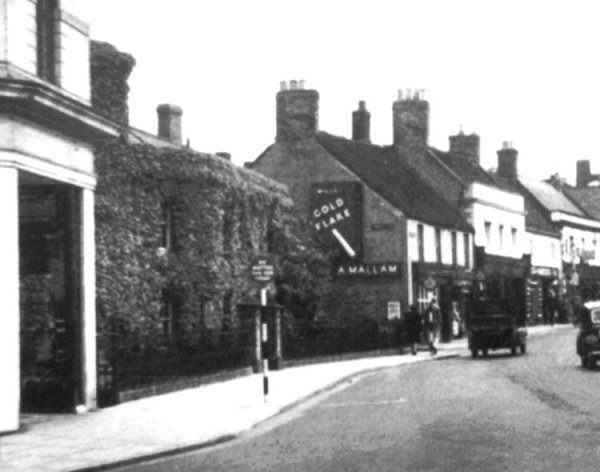
The Mansion House photographed in the mid-1950's when it was completely covered in ivy.
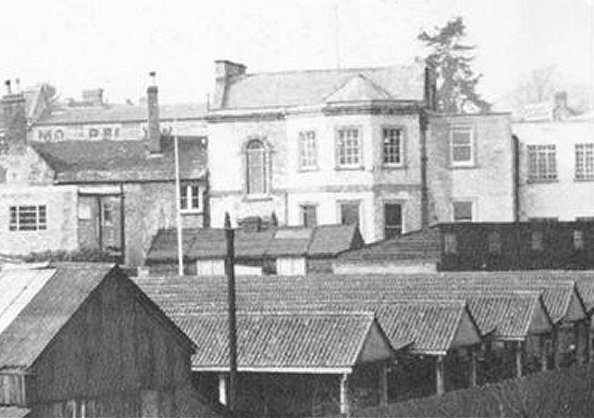
A sight that is never likely to be seen again due to modern buildings that now obscure this view of the Mansion House - seen across Fair Ground with its animal sheds, etc. Photographed from the bank by the Odeon Cinema in 1956. In my opinion the rear elevation of Mansion House is more impressive than the front elevation facing Princes Street.
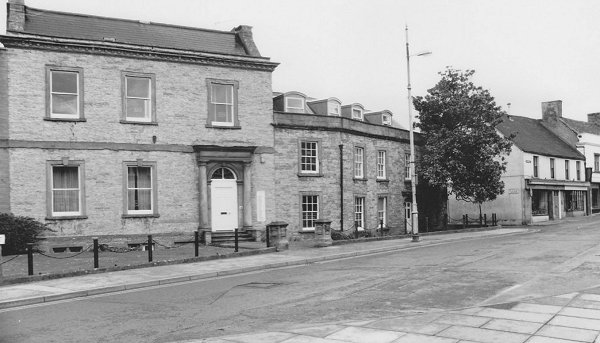
Photograph by
Trevor Hussey,
courtesy of Mrs
Anne Hussey
Mansion House and Magnolia House, photographed in 1990.
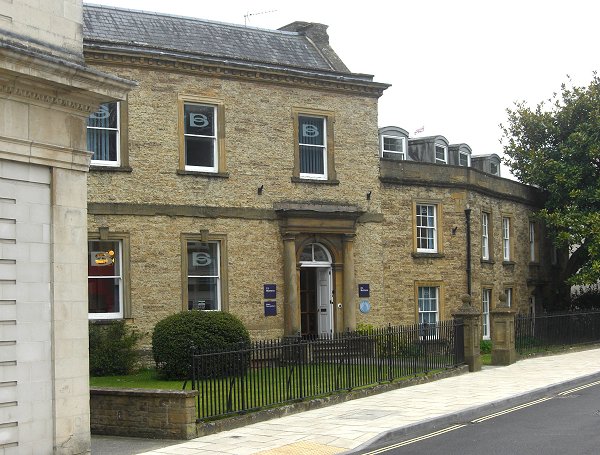
Mansion House with the nineteenth century extension, now known as Magnolia House.

This photograph
features in my
book "Yeovil
In 50 Buildings"
The original house is at centre with a late eighteenth or very early nineteenth century addition to the right (Magnolia House) and an early twentieth century addition at left. Shame about the modern replacement windows and ghastly glazing - what were they thinking?
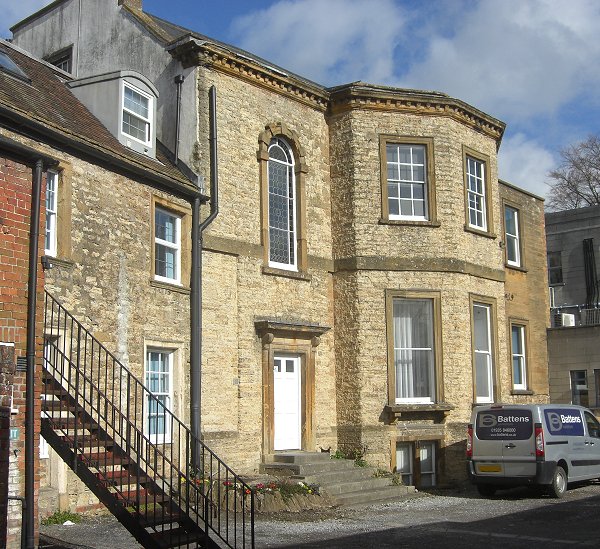
The rear of Mansion House displays some interesting features such as the dentilled cornice, fine window above the doorway (see next photo) and the simple doorway itself. Note the boot scraper at the top of the steps, by the doorway - one of only two I know of surviving in Yeovil.
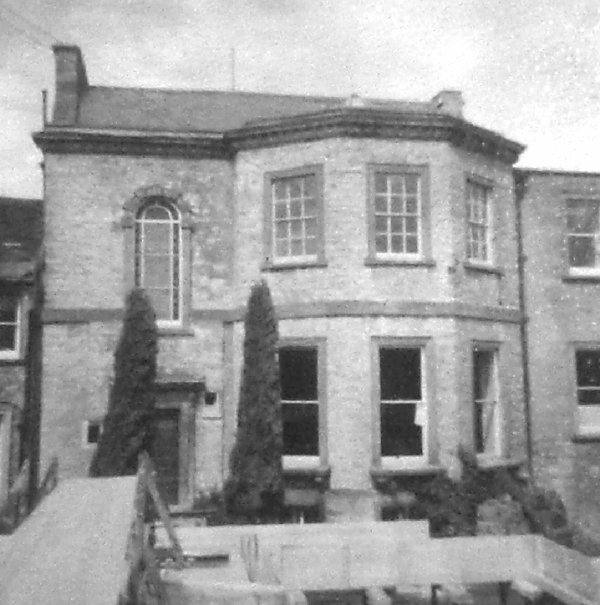
The rear elevation of Mansion House, photographed during restoration in the 1970s.
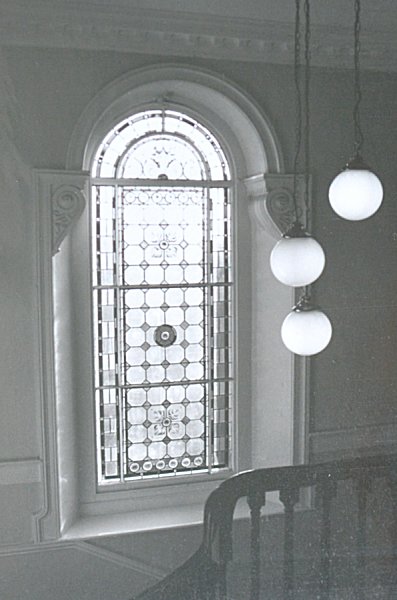
Courtesy of Bill and Audrey Robertson
The window above the rear entrance door photographed during restoration works in the 1970s.
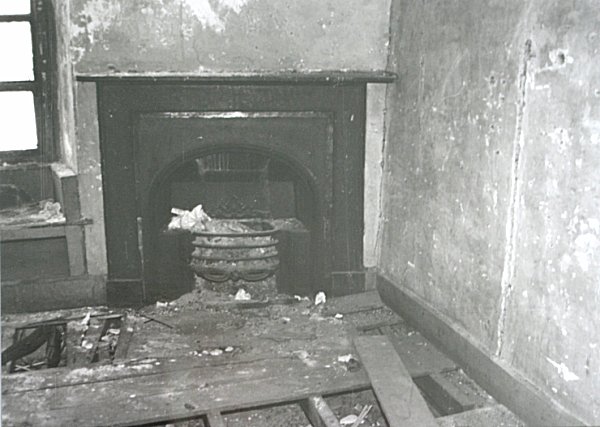
Courtesy of Bill and Audrey Robertson
An old fireplace photographed during restoration works in the 1970s.
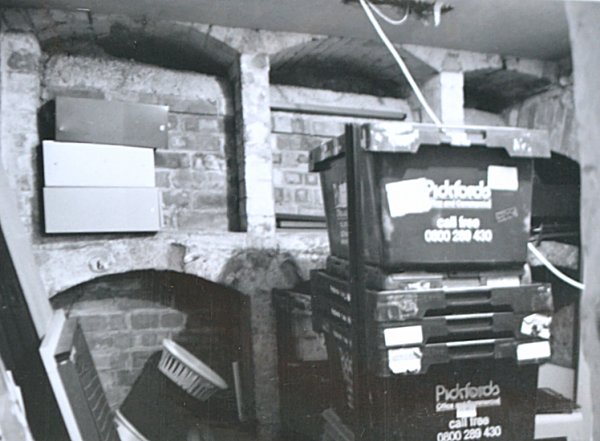
Courtesy of Bill and Audrey Robertson
The wine cellar, photographed during restoration works in the 1970s.
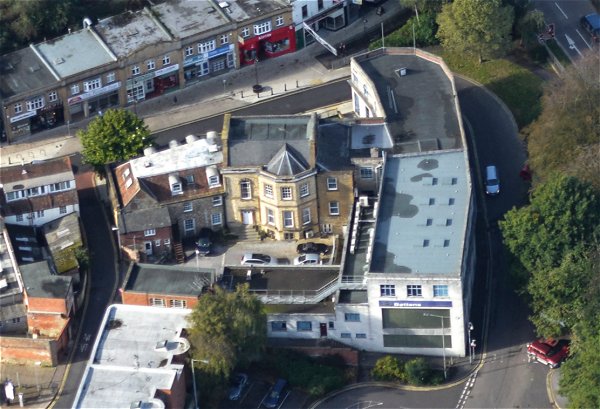
Courtesy of
Steve Wills
The back of the Mansion House (I think much more interesting than the Princes Street elevation) and the rest of Batten's ever-expanding empire in the former Vincent's car showrooms.